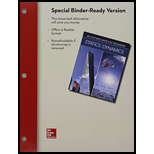
Concept explainers
Satellites A and B are traveling in the same plane in circular orbits around the earth at altitudes of 120 and 200 mi, respectively. If at t = 0 the satellites are aligned as shown and knowing that the radius of the earth is R = 3960 mi, determine when the satellites will next be radially aligned. (See the information given in Probs. 11.153 and 11.154.)
Fig. P11.160
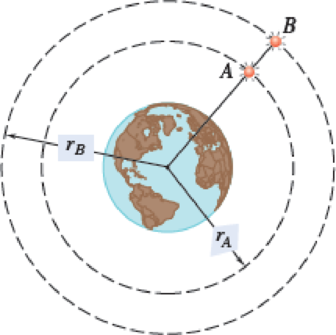
11.153 and 11.154 A satellite will travel indefinitely in a circular orbit around a planet if the normal component of the acceleration of the satellite is equal to g(R/r)2, where g is the acceleration of gravity at the surface of the planet, R is the radius of the planet, and r is the distance from the center of the planet to the satellite. Knowing that the diameter of the sun is 1.39 Gm and that the acceleration of gravity at its surface is 274 m/s2, determine the radius of the orbit of the indicated planet around the sun assuming that the orbit is circular.
11.153 Earth: (vmean)orbit = 107 Mm/h.
11.154 Saturn: (vmean)orbit = 34.7 Mm/h.
Want to see the full answer?
Check out a sample textbook solution
Chapter 11 Solutions
VECTOR MECH...,STAT.+DYNA.(LL)-W/ACCESS
- 2.4 To determine the effect of the temperature dependence of the thermal conductivity on the temperature dis- tribution in a solid, consider a material for which this dependence may be represented as k = k₁ + aT where k, is a positive constant and a is a coefficient that may be positive or negative. Sketch the steady-state temperature distribution associated with heat transfer in a plane wall for three cases corresponding to a > 0, a = 0, and a < 0.arrow_forward1.21 A one-dimensional plane wall is exposed to convective and radiative conditions at x = 0. The ambient and sur- rounding temperatures are T = 20°C and Tur = 40°C, respectively. The convection heat transfer coefficient is h=20 W/m² K, and the absorptivity of the exposed sur- face is α=0.78. Determine the convective and radiative heat fluxes to the wall at x = 0 if the wall surface tem- perature is T, = 24°C. Assume the exposed wall surface is gray, and the surroundings are large.arrow_forward1.12 You've experienced convection cooling if you've ever extended your hand out the window of a moving vehi- cle or into a flowing water stream. With the surface of your hand at a temperature of 30°C, determine the con- vection heat flux for (a) a vehicle speed of 40 km/h in air at -8°C with a convection coefficient of 40 W/m² K and (b) a velocity of 0.2 m/s in a water stream at 10°C with a convection coefficient of 900 W/m²K. Which condition would feel colder? Contrast these results with a heat flux of approximately 30 W/m² under normal room conditions.arrow_forward
- PLEASE SOLVE STEP BY STEP WITHOUT ARTIFICIAL INTELLIGENCE OR CHATGPT SOLVE BY HAND STEP BY STEParrow_forward1. A 40 lb. force is applied at point E. There are pins at A, B, C, D, and F and a roller at A. a. Draw a FBD of member EFC showing all the known and unknown forces acting on it. b. Draw a FBD of member ABF showing all the known and unknown forces acting on it. c. Draw a FBD of member BCD showing all the known and unknown forces acting on it. d. Draw a FBD of the entire assembly ADE showing all the known and unknown forces acting on it. e. Determine the reactions at A and D. f. Determine the magnitude of the pin reaction at C. 40 lbs. B A 6 in. 4 in. D F -5 in.4 in 4.arrow_forwardA crude oil of specific gravity0.85 flows upward at a volumetric rate of flow of 70litres per second through a vertical venturimeter,with an inlet diameter of 250 mm and a throat diameter of 150mm. The coefficient of discharge of venturimeter is 0.96. The vertical differences betwecen the pressure toppings is 350mm. i) Draw a well labeled diagram to represent the above in formation i) If the two pressure gauges are connected at the tapings such that they are positioned at the levels of their corresponding tapping points, determine the difference of readings in N/CM² of the two pressure gauges ii) If a mercury differential manometer is connected in place of pressure gauges, to the tappings such that the connecting tube up to mercury are filled with oil determine the difference in the level of mercury column.arrow_forward
- Can you solve it analytically using laplace transforms and with Matlab code as well please. Thank Youarrow_forwardCan you solve it analytically using laplace transforms and with Matlab code as well please. Thank You.arrow_forwardQ11. Determine the magnitude of the reaction force at C. 1.5 m a) 4 KN D b) 6.5 kN c) 8 kN d) e) 11.3 KN 20 kN -1.5 m- C 4 kN -1.5 m B Mechanical engineering, No Chatgpt.arrow_forward
 Elements Of ElectromagneticsMechanical EngineeringISBN:9780190698614Author:Sadiku, Matthew N. O.Publisher:Oxford University Press
Elements Of ElectromagneticsMechanical EngineeringISBN:9780190698614Author:Sadiku, Matthew N. O.Publisher:Oxford University Press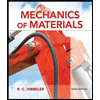 Mechanics of Materials (10th Edition)Mechanical EngineeringISBN:9780134319650Author:Russell C. HibbelerPublisher:PEARSON
Mechanics of Materials (10th Edition)Mechanical EngineeringISBN:9780134319650Author:Russell C. HibbelerPublisher:PEARSON Thermodynamics: An Engineering ApproachMechanical EngineeringISBN:9781259822674Author:Yunus A. Cengel Dr., Michael A. BolesPublisher:McGraw-Hill Education
Thermodynamics: An Engineering ApproachMechanical EngineeringISBN:9781259822674Author:Yunus A. Cengel Dr., Michael A. BolesPublisher:McGraw-Hill Education Control Systems EngineeringMechanical EngineeringISBN:9781118170519Author:Norman S. NisePublisher:WILEY
Control Systems EngineeringMechanical EngineeringISBN:9781118170519Author:Norman S. NisePublisher:WILEY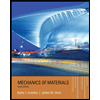 Mechanics of Materials (MindTap Course List)Mechanical EngineeringISBN:9781337093347Author:Barry J. Goodno, James M. GerePublisher:Cengage Learning
Mechanics of Materials (MindTap Course List)Mechanical EngineeringISBN:9781337093347Author:Barry J. Goodno, James M. GerePublisher:Cengage Learning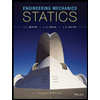 Engineering Mechanics: StaticsMechanical EngineeringISBN:9781118807330Author:James L. Meriam, L. G. Kraige, J. N. BoltonPublisher:WILEY
Engineering Mechanics: StaticsMechanical EngineeringISBN:9781118807330Author:James L. Meriam, L. G. Kraige, J. N. BoltonPublisher:WILEY





